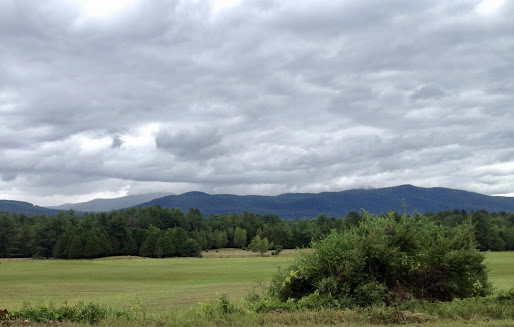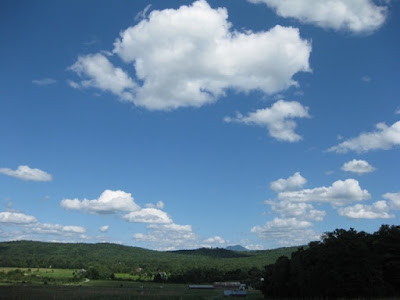
Nature must be viewed humanly to be viewed at all; that is, her scenes must be associated with humane affections, such as are associated with one's native place, for instance.
She is most significant to a lover.
A lover of Nature is preeminently a lover of man. If I have no friend, what is Nature to me? She ceases to be morally significant.
Moon nearly full; rose a little before sunset.
Cat-mint (Nepeta cataria) in bloom.
It is starlight about half an hour after sunset to-night; i. e. the first stars appear. The moon is now brighter, but not so yellowish.
Ten or fifteen minutes after, the fireflies are observed, at first about the willows on the Causeway, where the evening is further advanced.
Sparrows quite generally, and occasionally a robin sings. (I heard a bobolink this afternoon.) The creak of the crickets is more universal and loud, and becomes a distinct sound.
The oily surface of the river in which the moon is reflected looks most attractive at this hour. I see the bright curves made by the water-bugs in the moonlight, and a muskrat crossing the river, now at 9 o'clock.
Finally the last traces of day disappear, about 9.30 o'clock, and the night fairly sets in.
The color of the moon is more silvery than golden, or silvery with a slight admixture of golden, a sort of burnished cloud.
The bass tree is budded.
Haying has commenced.
Is not this period more than any distinguished for flowers, when roses, swamp-pinks, morning-glories, arethusas, pogonias, orchises, blue flags, epilobiums, mountain laurel, and white lilies are all in blossom at once?
H. D. Thoreau, Journal, June 30, 1852
Cat-mint (Nepeta cataria) in bloom. See June 3, 1852 ("The nepeta by Deacon Brown's, a pretty blue flower.")
I see the bright
curves made by the water-bugs in the moonlight . . . now at 9 o'clock. See June 2, 1860
(“Water-bugs dimple the surface now quite across the river, in the moonlight,
for it is a full moon.”); August
8, 1851 (“As I recross the string-pieces of the bridge, I see the
water-bugs swimming briskly in the moonlight . . .”)
Arethusas, pogonias, orchises, blue flags, epilobiums. See June 20, 1859 ("Great purple fringed orchis."); July 2, 1857 (“Pogonia ophioglossoides apparently in a day or two.”); July 7,1856 (The snake-head arethusa is now abundant amid the cranberries there [Gowings Swamp].”); July 8, 1857 (“Find a Pogonia ophioglossoides with a third leaf and second flower an inch above the first flower.”); July 24,, 1857 (“ great fields of epilobium or fire-weed, a mass of color. . . .”); August 1, 1856 ("Snake-head arethusa still in the meadow”); June 30,1851 ("The blue flag (Iris versicolor) enlivens the meadow.”)










